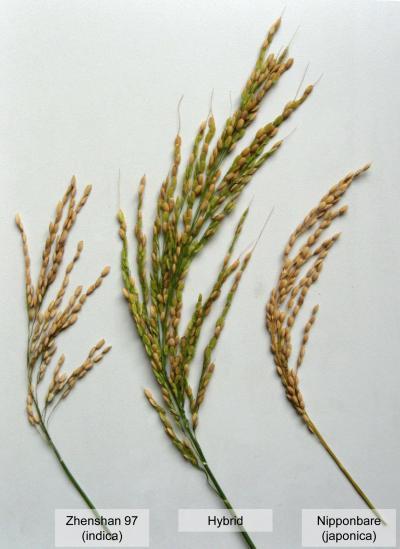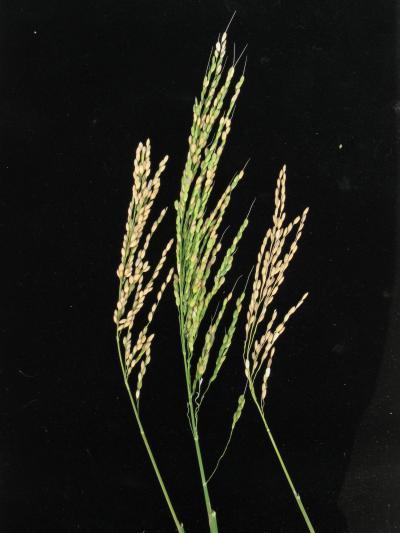Researchers have identified a set of three genes that are responsible for hybrid sterility in rice, or the inability of many hybrid rice species to pass their genes on to the next generation. These findings inform a model that suggests how such hybrid sterility is maintained across rice species, and they may lead to the genetic improvement of rice as a food stock.
The research is published in the 14 September issue of the journal Science, which is published by AAAS, the nonprofit science society.
When two different species mate, like a horse and a donkey, their hybrid offspring—a mule in this example—is born reproductively sterile. But, this phenomenon, known as hybrid sterility, isn't limited to the animal kingdom: Plenty of plants produce viable hybrids that are genetic dead-ends as well.
Now, Jiangyi Yang and colleagues from Huazhong Agricultural University in Wuhan, China, along with other researchers from the Chinese University of Hong Kong, have investigated the hybrid sterility that results between the indica and japonica subspecies of the cultivated rice, Oryza sativa.
The researchers honed in on a specific region of the rice chromosome, S5, which they had previously associated with hybrid sterility. They found three tightly linked genes—ORF3, ORF4, and ORF5—that control fertility in indica-japonica rice hybrids. The ORF5 gene functions as a killer and ORF4 partners with it while ORF3 works against them, taking on the role of a protector, they say.
Apparently, among indica and japonica subspecies of cultivated rice, the killer gene and its partner work together to kill female gametes, or eggs, while the protector gene actively tries to save them. Specifically, the researchers suggest that ORF5 produces a molecule that is sensed by ORF4 and leads to an uptick in stress on a cell's endoplasmic reticulum. That stress eventually activates ORF3, which works to stabilize and protect the endoplasmic reticulum, they say.

This image shows heterosis and sterility of hybrid between indica and japonica subspecies.
(Photo Credit: Qifa Zhang)
This kind of killer-protector system underlies the hybrid sterility between these two species of cultivated rice, according to the study. Yang and the other researchers suggest that non-lethal combinations of ORF4 and ORF5 may allow indica-japonica hybrids to pass their genes on to subsequent generations—and that overcoming this hybrid sterility in rice could lead to more desirable crops in the future.

This image shows heterosis and sterility of hybrid between indica and japonica subspecies in rice.
(Photo Credit: Jiangyi Yang and Qifa Zhang)